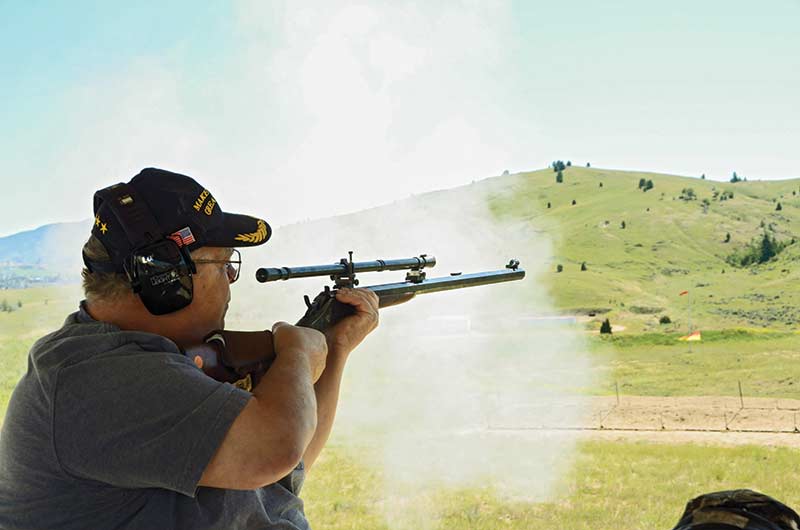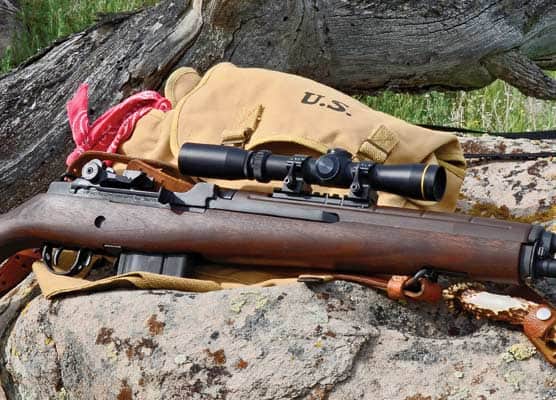Black Powder Cartridge Rifles
Passion amid the smoke
During my writing career, I obsessed over a genre of firearm to the point my editors became frustrated. It was because I studied those rifles so deeply, handloaded for them so avidly and shot them so much I didn’t want to write about anything else.
Fascination
My obsession was Black Powder Cartridge Rifle (BPCR). It’s generally understood among the initiated that BPCR stands for single shots — Sharps, Remington, Winchester Hi Walls, Ballards, trapdoor Springfields, etc. It includes all of their exotic big-bore cartridges, which for me started with .45-70s and has included dozens more of .40s, .44s .45s and .50s.
This all started in 1980 at SHOT Show #2, held in — of all places — San Francisco. Strolling around, I suddenly happened upon a large display of big single-shot Model 1874 Sharps rifles made by a company named Shiloh located on Long Island, N.Y. I was instantly mesmerized by these Model 1874 thundersticks with color case-hardened actions, long octagon barrels and beautifully finished black walnut stocks. I was most distressed to learn the waiting time to buy one was at least a year!
Never afraid of previously owned guns, I began a quest for any used Shiloh. Success happened in February 1981 when I became the owner of a .50-70 (1 ¾” case), which I immediately had re-chambered to .50-90 (2 ½” case). It was a big mistake as experience would prove. In the first weeks of owning the big thumper and shooting 450- to 650-grain bullets, a bruise so big appeared on my shoulder Yvonne made me take a break from rifle shooting for a bit.
Now over 40 years later, I can say I’ve owned over 50 Sharps Model 1874 rifles including vintage ones, Shilohs, C. Sharps Arms and Pedersolis, the latter made in Italy.
Naturally, when someone obsesses on a genre of firearm, the interest will spread to similar types. By the mid-1980s, I had purchased original Remington No. 1 rolling blocks, Model 1873 trapdoor Springfields and Winchester Model 1885 Single Shots.
New Games
At that time, I was a smokeless powder shooter. This changed in the mid-1980s when the NRA introduced a shooting sport called BPCR Silhouette. It called for firing at steel silhouettes of chickens, pigs, turkeys and rams at ranges of 200, 300, 385 and 500 meters, respectively. Shooters could sit or go prone with cross-stick rests at the latter three distances, but had to fire offhand at the 200-meter chickens about as big as a dinner plate.
This is the important part: The rifles had to have exposed hammers and fit in a pattern drawn out by NRA rules. Maximum weight was 12 lbs., 2 oz. They could be original BPCRs or newly manufactured replicas. Sights could only be open or peep-type with no click adjustments.
And that’s not all. Ammunition could only carry black powder (or Pyrodex) with lead alloy-only cast or swaged bullets. Not even gas checks were allowed on the bullets. There was a lot of fussing in the game’s early years because some shooters wanted to use the old trick of duplexing, i.e., mixing a percent of smokeless powder under the black stuff. The idea was to cut down on fouling. They said no one could get suitable accuracy from straight black powder to hit all of the distant silhouettes.
The idea of duplexing was firmly nixed because there was no way to regulate how much smokeless powder someone was loading and too much could be dangerous. It’s downright funny nowadays to see BPCR competitors, firing straight black powder, commonly hit all 30 of the pigs, turkeys and rams. One Pennsylvanian — Brian Chilson — has also hit all 10 chickens for a perfect score. We have discovered black powder, properly handloaded, can deliver near-MOA groups even from off-the-shelf rifles.
Taking Stock
In my BPCR time, I’ve hunted successfully in Africa, Montana and Texas; have participated in hundreds of BPCR Silhouette matches and dozens of 800-, 900- and 1,000-yard paper-target matches; and actually won the very first Quigley Match held in Forsyth, Mont., in 1991.
So what have been my favorite BPCRs? My enthusiasm led me to find both original Sharps and Remington Creedmoor target rifles and fit them with modern Kreiger .45-90 barrels.
As many of us competitors aged, some had to drop out due to eyesight, so the NRA instituted a scoped BPCR class to Silhouette matches. Montana Vintage Arms (MVA) began offering 6x scopes with competition-grade mounts so old-timers such as myself can keep shooting. Since firing my first round through a BPCR in 1981, I can say without exaggerating I’ve fired several tons of lead alloy, several hundred pounds of black powder and about 100,000 large-rifle primers though my BPCRs — something I cannot say about any other genre of firearm.










